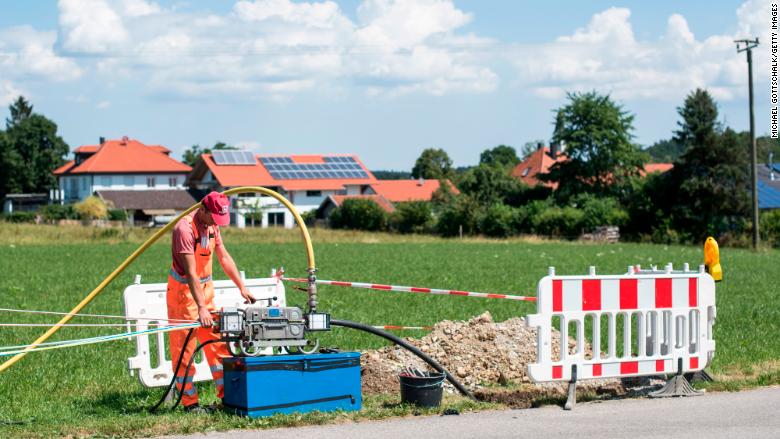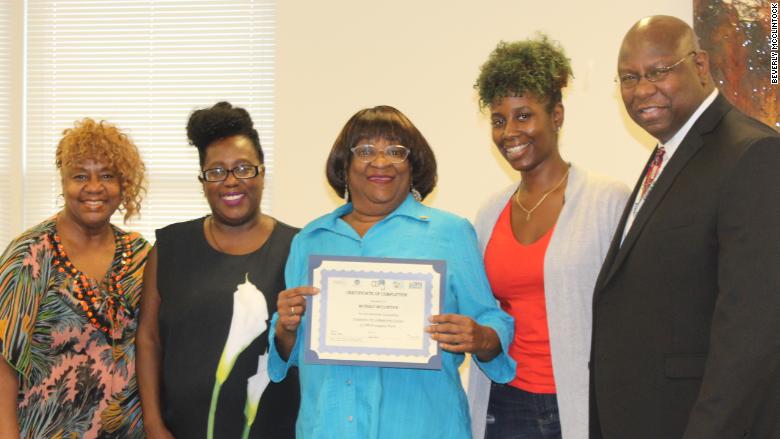
Fiber optic internet cables can bring crazy-fast internet connections to everyone in the United States. Theoretically.
In practice, the people who could most use a new high-speed connection -- low-income residents of both urban and rural areas -- are the ones least likely to get it.
Fiber optic cables have to be buried underground or strung from telephone poles, which is very expensive and tedious because it involves lots of workers and resources as well as the need to schedule home visits and get permission from owners.
But at an apartment building in Cleveland, where the residents have lower incomes and are mostly elderly, an experiment is underway that could help solve the problem.
One of the biggest issues with bringing fiber optic connections to people is getting the connection inside homes and businesses. That's because the cables have to be run through walls, basements or ceilings, which is especially difficult in apartment complexes.
New York City found this out the hard way in recent years, as a deal it had with Verizon that it hoped would bring fiber throughout the city turned into finger-pointing and a lawsuit. Verizon said it had kept its commitment by laying the fiber outside buildings. It said getting the fiber into buildings was often difficult to do because it required getting permission from the owners of numerous buildings.
Sckipio, an Israeli company, has brought technology to the Cleveland building that uses existing infrastructure to bridge the gap between the last point of installed fiber and users' homes.
"It's about economics," said Sckipio CEO David Baum. "People installing fiber want to see a return on investment. If they don't see a good ROI, [residents] won't be able to pay enough to cover costs, so [telecommunication] companies won't do it."
Sckipio helps the internet essentially "leapfrog" from the last point of laid fiber directly into homes and businesses without sacrificing too much speed. It works by using a technology called Gfast, a high-speed version of DSL, which allows speeds close to that of fiber optic to work over copper lines.

The modems are placed inside a building or nearby. Tenants can install their own Wi-Fi receivers, which is easier, cheaper and more appealing for fiber optic companies because they don't need to send technicians to each apartment.
Beverly McClintock, a resident of the Cleveland apartment complex, said many of the tenants in the building had never had internet access before. Many had also never owned computers. They're now accessing the web at faster speeds than those available to most of the country using refurbished computers they received as part of the internet rollout.
"[It] changed my life in a huge way," said McClintock, 60. "A lot of us couldn't afford these desktops and laptops, so we truly appreciate this."

She previously rode her motorized wheelchair or took the bus to visit the library two miles away. Now, McClintock, who is also taking classes to become a social worker, is able to get online from home, making it easier to do her homework, job hunt, use Facebook and set up doctor's appointments.
Dan Hays, an adviser at PricewaterhouseCoopers who specializes in telecommunications issues, says the concept offers potential benefits over current DSL but called out its limitations.
"It's really only useful when you have a fairly dense set of subscribers, which happens in a multi-dwelling unit, an apartment or condo complex," Hays said. "It requires that you have a high-speed line, most often fiber optic cable, that reaches at least within 250 meters of user."
He believes bringing faster service to areas that aren't fully connected to fiber is the best use of the technology. But he thinks it's mainly a stopgap until fiber can be installed in those regions.
Still, residents like McClintock said the internet access has been a major help.

